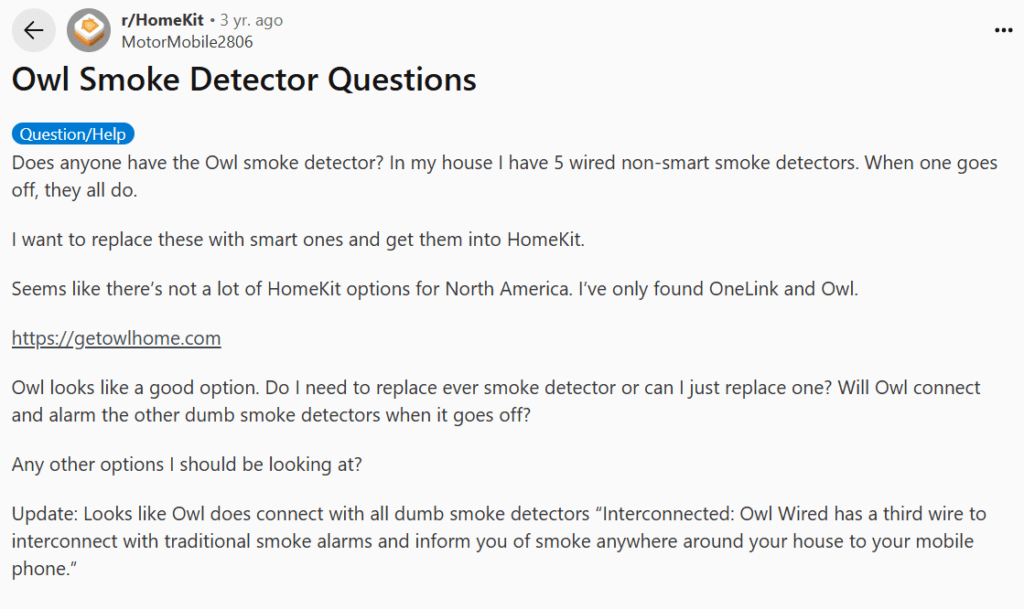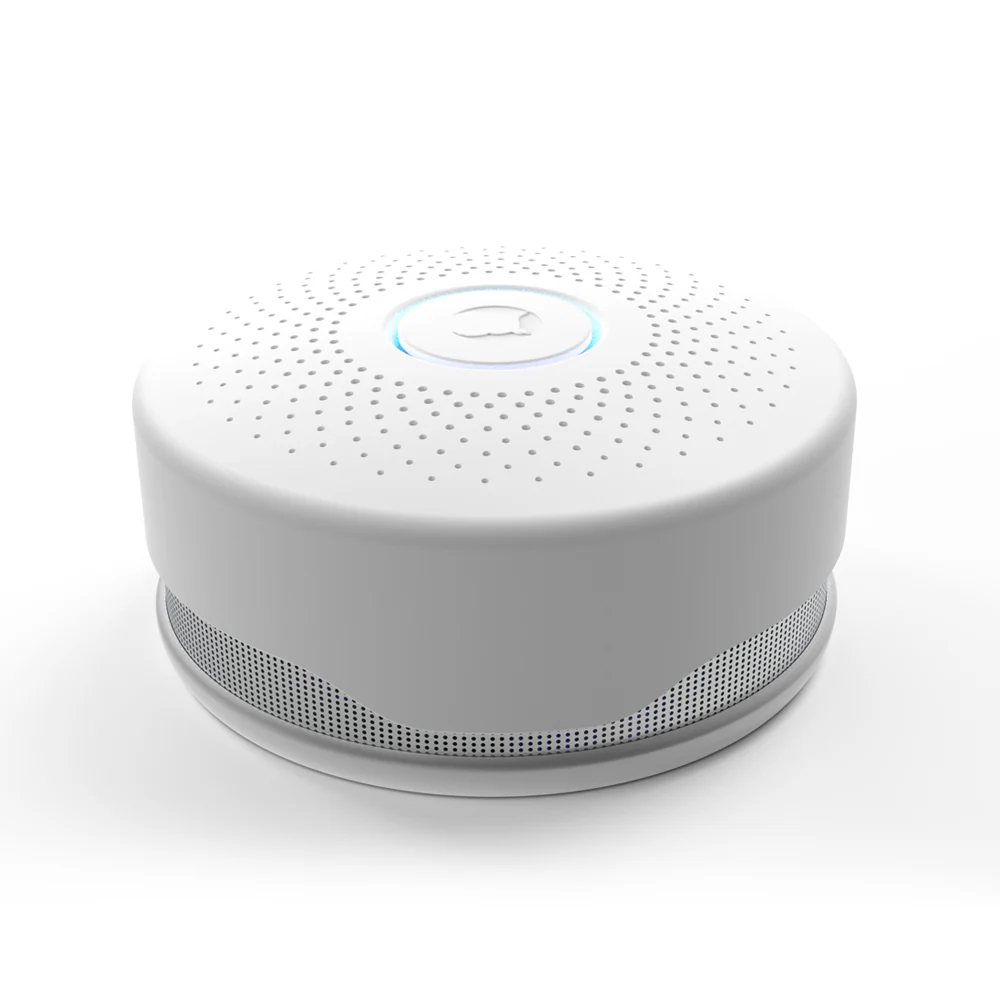Lately, I’ve seen quite a bit of chatter online about the Owl Home system, especially their Owl Smoke Detector. Since many of you seem interested, I spent some time digging into it. I’ve browsed their official website (https://getowlhome.com/) and looked at what people are saying in forums and discussions to piece together a clearer picture. Consider this my personal rundown – what I found, what looks promising, and a few things you’ll definitely want to double-check yourself.
What Exactly Is This Owl Home Device?
First off, when you hear “owl smoke detector,” don’t picture a cute little bird gadget. Owl Home is way more than that. Think of it less like a basic smoke alarm and more like a smart little guardian watching over your home’s environment. It’s designed to replace the standard smoke detectors you probably have wired into your ceiling.
Inside its modern-looking shell, it packs a bunch of sensors:
- Smoke: Uses a photoelectric sensor, which is generally good at catching those slow, smoldering fires early.
- Carbon Monoxide (CO): Protects against this dangerous, invisible gas using an electrochemical sensor.
- Motion: Can sense movement, adding a basic security feature.
- Sound: It’s smart enough to recognize specific sounds, like glass breaking or even the standard alarm sounds from other smoke/CO detectors you might still have.
- Temperature & Humidity: Keeps track of the climate inside your home.
- Air Quality: Monitors for things called VOCs (Volatile Organic Compounds), giving you a heads-up on your indoor air quality.
All this information gets sent over Wi-Fi straight to an app on your phone (iOS or Android), so you can see what’s going on anytime, anywhere.
How Good Is It At Detecting Smoke?
Okay, all those sensors are interesting, but the number one job is still detecting smoke reliably, right? Here’s what Owl Home highlights:
- The Right Sensor Type: As mentioned, it uses a photoelectric sensor. Why does that matter? It’s generally better at sensing the kind of smoke that comes from smoldering things (like a couch cushion) before they burst into big flames. That could mean precious extra time to get out safely.
- UL Certified: This is super important. Owl Home states on their site that the device meets the UL 217 standard for smoke alarms. This isn’t just marketing fluff; UL (Underwriters Laboratories) is a respected independent safety company. Passing their tests means the detector meets strict safety and performance requirements for the US market.
- Smarter Alerts: Instead of just a loud, confusing beep, Owl Home sends specific alerts to your phone. It’ll tell you if it’s sensing smoke, CO, motion, or even if its own battery is low. If you’re not home, getting that detailed info instantly is a huge plus.
Why Might You Want This Over a Regular Detector?
Upgrading from a basic smoke alarm could offer some real advantages:
- Know Sooner, Know More: Getting alerts on your phone, combined with the sensor type, can mean quicker and clearer warnings about potential danger.
- More Than Just Fire: Keeping tabs on CO, air quality, and unusual sounds gives you a broader sense of security.
- Peace of Mind When You’re Away: Being connected via the app means you’re not left wondering about your home’s safety while you’re out.
- Less Annoying Beeping?: We all hate that random low-battery chirp! While understanding why smoke detectors beep is useful, Owl Home aims to tell you exactly what’s wrong via the app, hopefully reducing those mystery noises.
Heads Up: Installation Note
Just be aware, Owl Home is designed to replace hardwired smoke detectors (the ones connected to your home’s electrical wiring, usually with a battery backup too). This means installation isn’t as simple as sticking a battery-only unit on the ceiling. It ensures constant power, but you’ll need to be comfortable with basic wiring or hire an electrician. Check their website for compatibility details.
Things to Double-Check Before You Buy (Based on My Digging)
Now, while the features sound impressive, my research flagged a couple of things I think are really important to investigate further yourself:

- How Active is the Company? Here’s something tricky. While some online tools might hint at a possible website or blog update around Fri, Sep 13, 2024, the official blog itself hasn’t actually seen frequent public updates. My advice? Before buying, check the main website (https://getowlhome.com/) carefully. Look for recent news, check out their support section, maybe even try contacting them. For a critical safety device, you want to feel confident the company is active, providing support, and keeping things up-to-date.
- Do They All Go Off Together? This is a big one raised by users online (like in this Reddit thread: https://www.reddit.com/r/HomeKit/comments/xapocz/owl_smoke_detector_questions/). Many traditional hardwired smoke alarms are “interconnected” – if one detects smoke, they all sound the alarm instantly. This is crucial for alerting everyone in the house. It wasn’t immediately clear from my research if multiple Owl Home units reliably do the same thing. Personally, I think this is essential information to confirm directly with the company, especially if you have a larger home.

So, What’s My Final Take?
Okay, wrapping it up. Based on what I’ve seen, the Owl Home system is definitely trying to be a smarter, more informative way to handle home safety compared to basic alarms. The multiple sensors and app connectivity are appealing, and the fact that it states it has that critical UL safety certification is a big plus.
However, those points I mentioned about checking the company’s recent activity and getting a clear answer on whether the alarms sync up (interconnect) are, in my opinion, really important things to nail down before you click “buy.”
Is it the right owl smoke detector solution for you? It certainly offers more features than most. But definitely do that final bit of homework on those specific concerns to make sure it fits your needs and gives you the complete peace of mind you’re looking for in a safety device.

